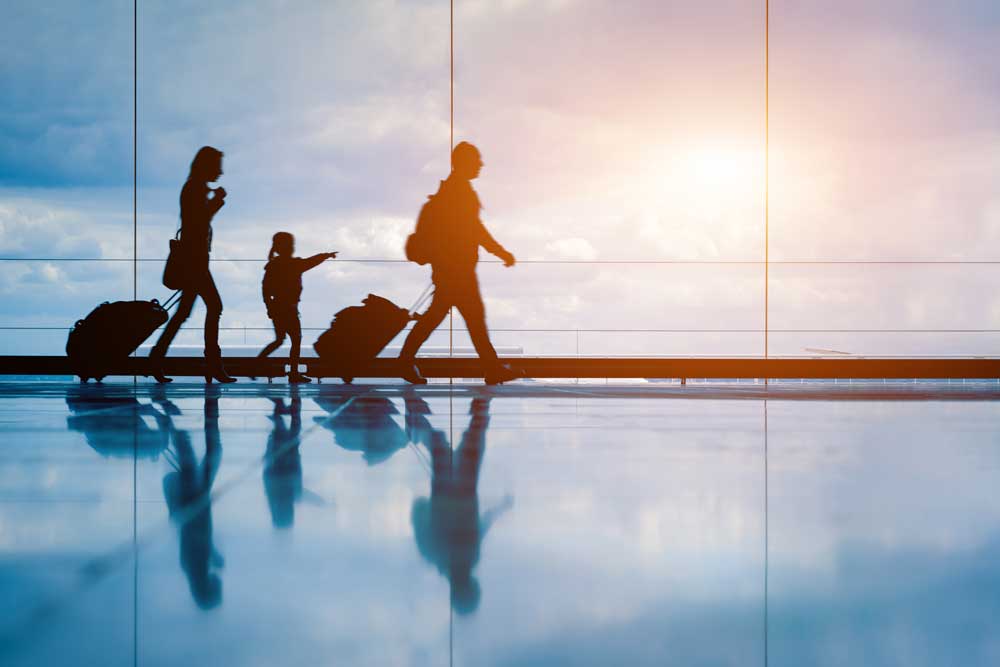Long-haul flights with children can feel overwhelming, whether you're travelling with a squishy newborn or a curious five-year-old. But with the right mindset, thoughtful preparation, and a bit of in-flight strategy, these journeys can become more manageable.
The Booking Stage
Choose your flights strategically. Opt for overnight flights whenever possible to align with your child’s sleep schedule. Avoid tight connections since kids move slowly and may need bathroom or feeding breaks. If you’re flying long-haul, one long flight is often better than two short ones.
Seat Selection
Book a bulkhead row if traveling with a baby and request your bassinets in advance. Window seats are great for toddlers since they love looking out and can lean against the wall to nap. Avoid exit rows with kids under 15 since they’re not permitted there. Speak to the airline in advance to request infant meals, kids' meals, and early boarding. Mention any allergies or any accommodations needed.
Prepare Your Child
Talk about the trip in advance with toddlers and older kids. If it’s their first time on a flight, show them pictures of planes and the airport. Create a ‘plane rules’ list to build excitement and set expectations. Practice wearing masks (if required) or headphones at home. Gradually shift sleep patterns before travel, say by an hour per day if you’re crossing time zones.
Packing
The golden rule with kids is to pack light, without being underprepared. Paediatrician Dr Sadhana Krishnamurthy lists out some essentials:
For babies:
One diaper for each hour of travel, plus a few extras
Unscented water wipes
Changing pad
Formula or breast milk pumped in advance (security rules often allow these, but it’s best to check earlier)
Bottles or sippy cups
2–3 changes of clothes
Baby carrier or wrap for walking down the aisle hands-free
Light blanket that can double as a cover, pillow or changing pad
For toddlers:
Snacks that are dry, mess-free, and familiar
A water bottle with a straw or spout
One comfort item, such as a blanket, pacifier, or stuffed toy
1–2 changes of clothes
Pull-ups or overnight diapers, even if they’re potty-trained
Colouring book, stickers and crayons
A few tiny new toys for surprise value to keep them entertained
For Kids Over Five:
If you’re fine with using technology sparingly, headphones and a tablet loaded with downloaded, pre-approved content
Audiobooks or kid podcasts
Travel games or magnetic puzzles
Journal or sketchbook
Healthy snacks such as makhanas or dates
Neck pillow or travel pillow
For yourself:
A spare shirt
Mini toiletries
Ziploc bags for any dirty clothes or trash
Sanitiser and lotion
Child-safe disinfecting wipes
Whatever your child’s age, always carry a small set of medicines for the flight, pre-approved by your doctor.

Airport Survival Strategies
1. Arrive early, but not so early that the excitement wears off even before you board. What’s more, you’ll have to entertain them without a playground or playmates in sight! For international flights with kids, arrive three hours early.
2. Most airports have family security lanes and priority boarding. Please use them without guilt if you want to retain your sanity. You can also check in your stroller at the gate once you bring it through security, and don’t have to do it right away at check-in. This way, your child can nap.
3. For babies, give a bottle, breastfeed, or offer a sippy cup during take-off and landing to help with ear pressure. For older kids, offer some gummy snacks or other chewy items.
In-Flight Tips
For babies, bring white noise on your phone if that helps your baby nap. Dim the cabin light near you with a blanket over your seat. Change the diaper right before boarding.
For toddlers, rotate activities every 30-40 minutes. Unwrap small surprises mid-flight, such as mini figures or sticker books. Avoid sugary snacks, since they energise your kids. But snack as often as needed to avoid hunger meltdowns. Dress them in PJs if it’s a night flight—it cues sleep time.
For older kids, let them pack their own small backpack. Involve them in reading the safety card, choosing snacks, or managing their own time. Talk them through turbulence and encourage journaling, drawing, or planning fun things for the trip.
Post-Flight
You don’t have to be the first to rush off the plane. Get yourselves together, collect all your baggage, and leave. Use airport restrooms to change diapers, let toddlers stretch, or freshen up before you collect your luggage.
Remember, you’re not looking for the perfect flight; you just want to get through it. Through the journey, accept help whenever someone offers, whether it’s cabin crew, or a friendly co-passenger. Finally, learn to block out judgment. Not everyone loves kids on planes. That’s okay, you’re doing your best.